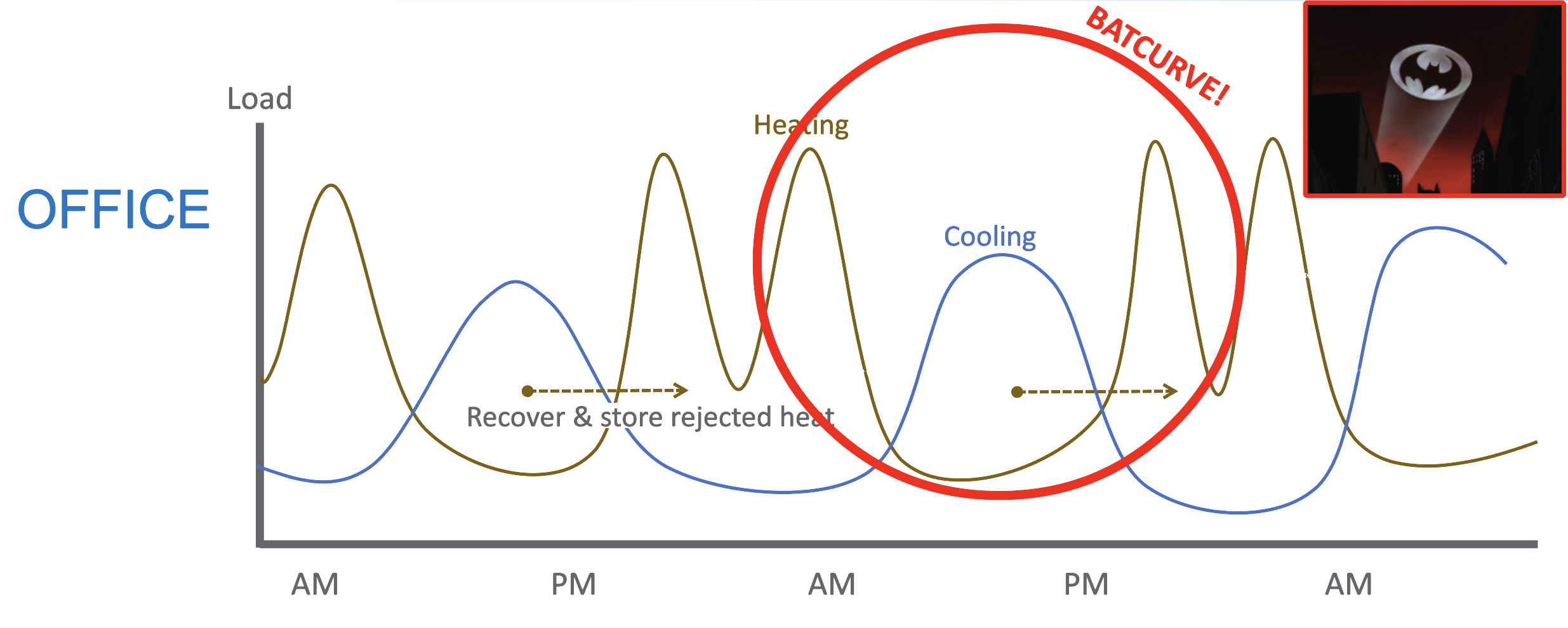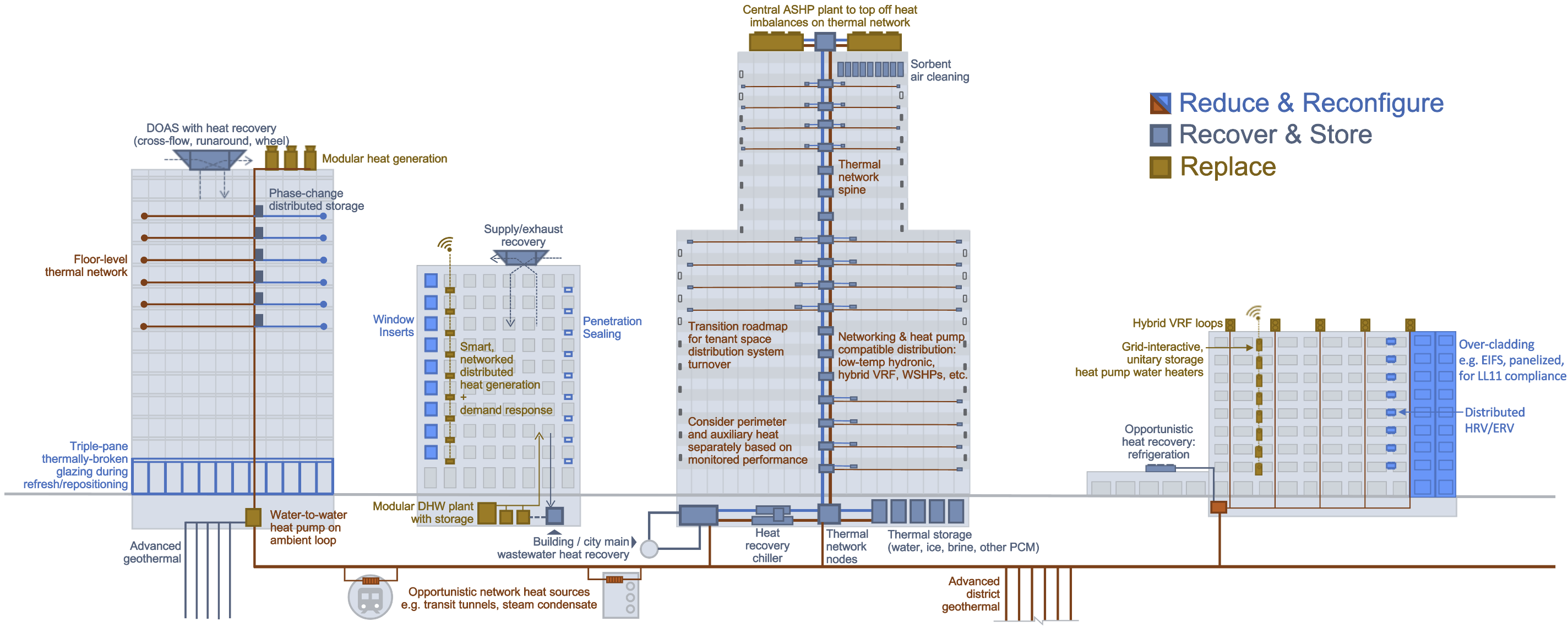The Resource Efficient Electrification (REE) method of building decarbonization incorporates strategic capital planning, an integrated design process, and an incremental, network-oriented approach to deliver building heating, cooling, and ventilation which: - requires limited or no combustion,
- enables carbon neutrality,
- is highly efficient at low design temperatures and during extreme weather,
- is highly resilient, demand conscious, and energy grid-interactive,
- reduces thermal waste by capturing as many on-site or nearby thermal flows as possible, and
- incorporates realistic and flexible implementation strategies by optimizing and scheduling low carbon retrofits phase-in.
| 


